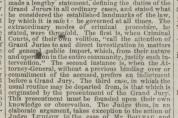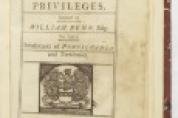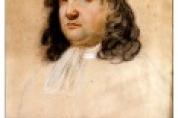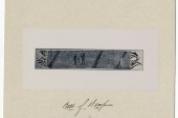One day prior to the Philadelphia Inquirer publishing this article, the court case indicting Albert D. Boileau, proprietor of the Evening Journal, took place. Boileau was taken into custody for publishing accusations of poor war efforts and choices in Lincoln's administration.
Teachers, need a primary source to create a lesson in the classroom? Students, need a source for a research project?
Here, we've listed the primary sources featured in our Unit Plans. Click on a primary source to go to its page, where you may find additional images, transcriptions of the text, a citation guide for including the source in a bibliography, or ways to purchase copies of the source for the classroom.
HSP's collections are not limited to the primary sources listed here. To see all that HSP has to offer, come visit us or explore our collection online through the Digitial Library and the Discover online catalog.
Some sources have handwriting that is difficult to read. If you need help decoding handwriting, check out this guide from Ancestry.
 |
 A printed version of the original Charter of Privileges by William Penn. This version was printed in 1741 by Benjamin Franklin. |
 This is a portrait of William Penn's mansion on Letitia Street in Philadelphia, built in 1682 and removed in 1883. |
 A portrait of William Penn by Francis Place. |
 Portrait of a young William Penn in armor. |
 The Emancipation Proclamation was an executive order issued by Abraham Lincoln on January 1, 1863. It proclaimed the freedom of slaves in the ten Confederate states still in rebellion. |
 This is a letter written by Thomas Drayton to his brother Percival in response to the election of Abraham Lincoln in November, 1860. |
 This is a letter written by William Penn to the King of the Indians. Penn asked the Native Americans to live in harmony with him and the colonists as neighbors and friends. |
 William Penn's treaty with the Native Americans. This celebrated treaty was formed in the year 1682, under a large elm at Shackamaxon, now Kensington, Philadelphia. |
 Deed between William Penn and the Delaware Indians, July 15, 1682. This deed granted William Penn the land between the Delaware River and Neshaminy Creek. |
 This belt commemorates William Penn's treaty with the Delaware Valley Indians. |
 Thomas Holme's A Portraiture of the City of Philadelphia in the Province of Pennsylvania. In 1682, William Penn appointed Holme surveyor-general of Pennsylvania and charged him with the task of laying out the "greene country towne" that Penn envisioned along the Delaware River. The site that Penn acquired for the city of Philadelphia stretched two miles east to west across a tract of land situated between the Delaware and Schuylkill Rivers; all told, the rectangular grid of land comprised twelve thousand acres. |
- ‹ previous
- 12 of 22
- next ›